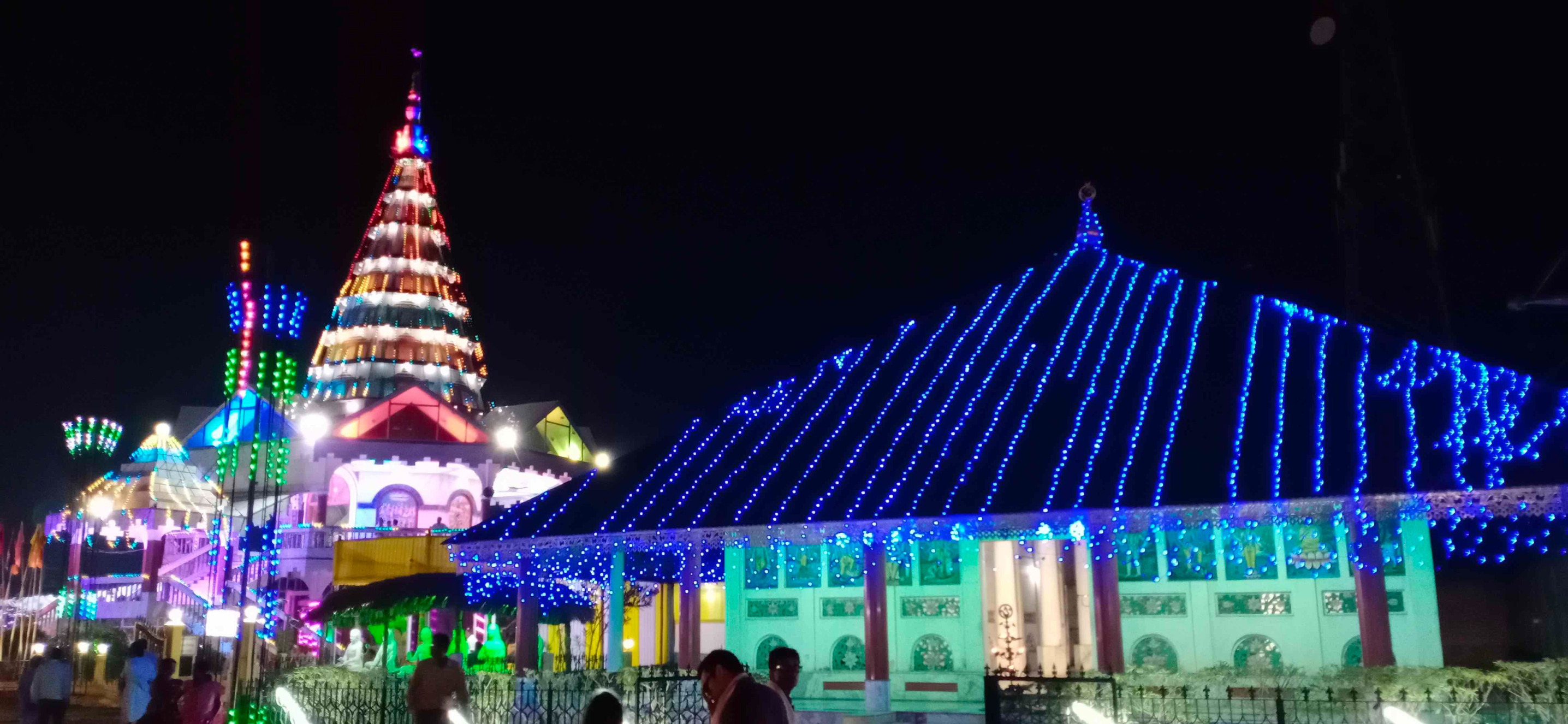howlytown.in
.png?ts=1763611149)
Howly Raas Mandir
A Symbol of Devotion and Architectural Grandeur

Discover the hidden gem of Assam — the Howly Raas Mandir! Step into a world of divine beauty, where gleaming white marble idols, majestic architecture, and centuries-old traditions come alive. Whether you're a lover of history, art, or spirituality, the Howly Raas Mandir offers an unforgettable journey into Assam’s rich cultural heart. A must-visit destination for every traveler seeking authentic experiences!
The Howly Raas Mandir, located in the town of Howly in Assam, is not just a religious center, but also a testament to the region's deep-rooted spiritual and architectural heritage. The temple stands as a proud representation of devotion, culture, and the rich history of the Howly area. This article explores the history, construction, and significance of the Howly Ras Mandir, shedding light on its architectural brilliance and religious importance.
Inception of the Temple
The idea of constructing the Howly Raas Mandir was initiated during a public meeting on October 9, 1994, where the first temple construction committee was formed. The foundation of the temple was laid a few years later, on November 14, 1997, by Surendra Nath Medhi, the then Minister of Animal Husbandry, Assam. His initiative marked the beginning of a long-awaited spiritual journey for the people of Howly and nearby regions.
Architectural Planning and Design
The architectural design of the temple was meticulously planned by an architect from Guwahati. The temple's construction involved the use of approximately 85 tons of white marble plates and granite procured from Kishangarh, Rajasthan. The use of such high-quality materials ensured that the temple would be an epitome of both beauty and durability.The temple’s design was created by D.K. Bora, an architect and graduate from the Gujarat Institute of Engineering. The temple's imposing structure is 102 feet in height and 62 feet in width, featuring two prominent domes, making it a grand sight for devotees and visitors alike.
Idols and Sculptures Inside the Temple
One of the most striking features of the Howly Raas Mandir is the presence of exquisite marble idols. Inside the temple, there is a 5-foot tall marble idol of Radha-Krishna, which stands as the focal point of devotion. Additionally, there are 8 pairs of 3-4 feet tall marble idols of Radha-Krishna. The temple also houses 22 other idols, including those of Brahma, Vishnu, Maheshwar, and Yogini Buddhi. These idols were sculpted by renowned sculptor Lalu Prasad Sharma, a Padma Bhushan awardee, whose expertise ensured that the idols reflected the divine qualities of Lord Krishna.The design of the idols was inspired by the famous Shri Krishna Temple in Mathura, Lord Krishna's birthplace, adding a touch of tradition and sacredness to the temple. The meticulous craftsmanship of these idols and sculptures attracts visitors from far and wide, showcasing the rich artistic culture of Rajasthan.
Consecration Ceremony
The temple was officially consecrated on January 31, 2007, when the Pran Pratishtha ceremony was conducted according to Vedic rituals. This ceremony marked the beginning of a new chapter for the Howly Ras Mandir, establishing it as a place for daily worship, where the idols are bathed, worshipped, and adorned with offerings and prayers.Prior to the construction of the new temple, the Raas festival was celebrated with clay idols, which were consecrated with Vedic mantras during the full moon night. Devotees would gather for the Raas Leela festival, and after several rituals including Puja, Homa Yajna, and Naam Kirtan, the idols were immersed in water. With the new temple, however, the idols are now no longer immersed, and daily worship practices are held in a more structured manner.
Lighting and Decoration
The Howly Raas Mandir has been illuminated with modern lighting systems, which highlight its architectural beauty and grandeur. The lighting, installed by Ganesh Das of Jalpaiguri, not only brightens the temple but also creates an aura of serenity and devotion around the entire complex, making it a captivating sight during the night.
In addition, the exterior walls of the temple are adorned with seven natural scenes of the Raas Leela, crafted out of plastic by an artist from Nabadwip, West Bengal. These scenes depict the divine dance of Radha and Krishna, adding a touch of vibrancy and artistic elegance to the temple.
Construction Team and Effort
The construction of the Howly Raas Mandir was a significant endeavor that required meticulous planning and execution. The primary masons responsible for the construction were Thakur Sharma and Amar Sarkar. They were assisted by nearly 40 Hindu workers and fellow masons, who worked tirelessly for nearly 10 years to complete the temple. Their dedication and craftsmanship are evident in every corner of the temple, from the grand pillars to the intricate sculptures.The temple's foundation pillars were constructed using a 1:2 ratio of cement and sand, each measuring 6 feet deep and 6 feet wide. The temple itself is supported by 20 pillars, which were strategically placed to ensure the structural stability of the grand building.
Temple's Legacy and Religious Importance
The Howly Raas Mandir is not just a place of worship; it is a significant cultural and historical landmark for the people of Howly and Assam. The temple stands as a symbol of devotion and a reminder of the region’s rich spiritual traditions. It plays an important role during the annual Ras festival, drawing thousands of devotees who come to witness the Ras Leela and offer their prayers to Radha and Krishna.
The Howly Raas Mandir is also a beacon of architectural excellence, showcasing the fusion of traditional design with modern construction techniques. It stands as a testament to the dedication of those who worked tirelessly to bring this temple to life, and it continues to serve as a hub for the spiritual and cultural activities of the region.
Translated to english by
Bhargav Das
Original by Ashim Das